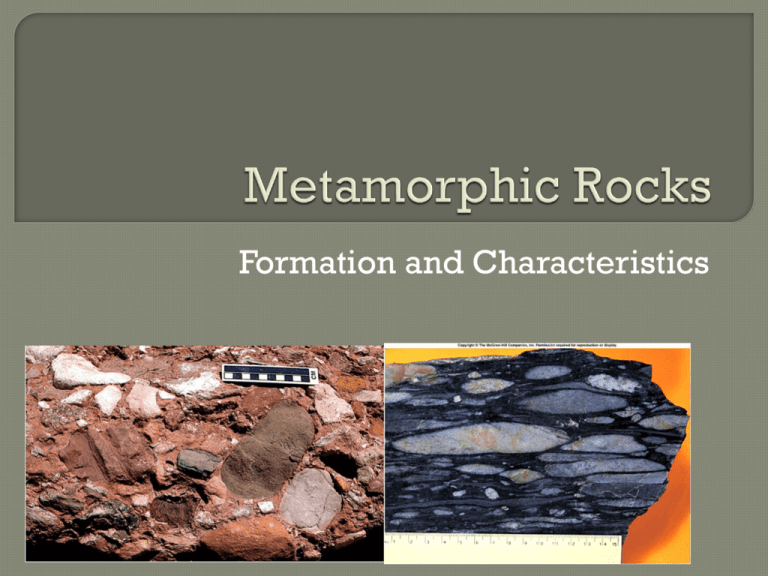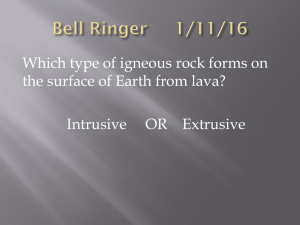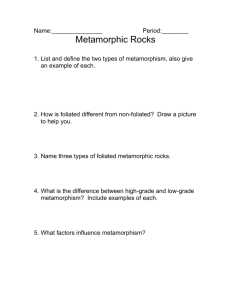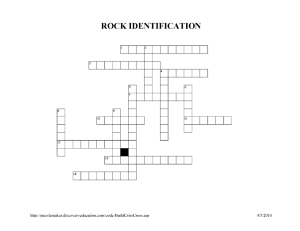Metamorphic Rocks
advertisement

Formation and Characteristics “Meta” means change (Greek) “Morph” means form (Greek) A rock that has been changed from its original form (parent rock) by heat, pressure, and fluid activity into a new form (daughter rock). Contact – caused by proximity to igneous activity. Heat causes minerals to recrystallize but not melt. Dynamic – associated with faults and earthquake zones Regional – Caused by tremendous pressures associated with plate tectonics. Deep burial. Progression of Metamorphism Start with a shale and then hit it with heat and pressure! More Heat & Pressure Rock Name Rock Type Grade of Metamorphism Shale Sedimentary ----- Slate Metamorphic Low Phyllite Metamorphic Low/Intermediate Schist Metamorphic Intermediate/High Gneiss Metamorphic High Molten Rock Cools into Igneous Rock ----- Shale (Sedimentary Rock) Heat & Pressure Slate (Metamorphic Rock) Slate (Metamorphic Rock) Heat & Pressure Phyllite (Metamorphic Rock) Phyllite (Metamorphic Rock) Heat & Pressure Schist (Metamorphic Rock) … you end up with something that is really Gneiss! Foliated • “Folios” means page, or leaf-like • Rock has distinct layers Often not smooth layers like sedimentary rock • Formed under direct pressure (ex. Pushing down) Non-foliated • No distinct layers • Often a massive crystalline structure • Formed under uniform pressure (all directions) Foliated Texture Non-foliated Rocks • Marble: - metamorphosed limestone Quartzite: •• Quartzite: -- metamorphosed metamorphosed quartz sandstone sandstone quartz Rocks whose form is changed by temperature and pressure. 3 different types • Contact • Dynamic • Regional 2 Textures • Foliated • Non-foliated More temperature changes and pressure = more








